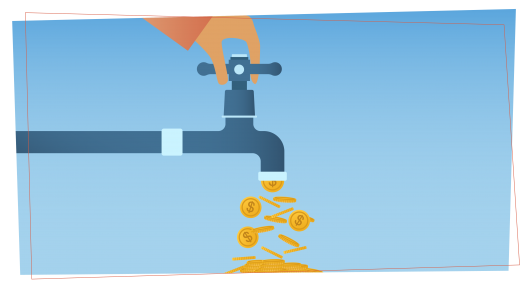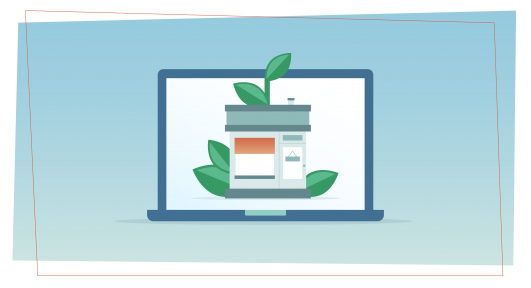How Sam Waldman of Goodz Grew his Ecommerce Consultancy Agency
Small Business
Ecommerce exploded in 2020 as companies big and small across the globe struggled to retain their customer base during strict lockdowns. Since then, investing in online selling and marketplaces has become the norm.
For former freelancer and now agency owner Sam Waldman, the boom in online marketplace selling has only helped him scale his ecommerce consultancy, Goodz. Based in Mexico City, Sam helps businesses sell successfully on popular ecommerce marketplaces like Amazon and Mercado Libre.
And as an owner of the ecommerce company Iluminación Vintage, Sam understands the challenges his customers face when it comes to selling their products and building revenue.
We spoke with Sam to learn more about ecommerce, Goodz, and how cash flow affects the business.
From freelancer to agency
Starting from a team of one at Goodz, Sam eventually decided to take on more people as the demand for his services increased. Bringing on more people meant adding complexity and potential expenses, but also allowed him to focus more on providing value in his services.
After all, growing your business takes experimentation and time. You are building long-lasting client pipelines and systemizing your processes.
You also need to look at how you can afford to bring people on board. Generally, you don’t just want a high demand to fuel hires. For a full-time hire, you’ll need to be able to have enough cash flow to cover their salary, benefits, and other potential incentives. If you cannot do this, or if you aren’t sure, bringing on independent contractors or part-time workers can give you more flexibility.
No matter how you choose to hire, cash flow management and projections factor into the decision. Often, it can be helpful to review other aspects of your financials if your cash flow isn’t enough to hire help.
When Sam transitioned from freelancing to running an agency and the demand for his services grew, he first began by reviewing different cash flow scenarios. Understanding that demand and modeling different financial scenarios helped him determine when he could bring on more people.
Testing revenue models
The first thing that Sam had to consider was his revenue model. Some consultant agencies prefer to charge a percentage of sales, while others have a flat fee based on services provided.
“I tried a lot of things in the beginning,” says Sam, “but I ended up going with a service-based revenue structure.”
Sam first needed to ensure that his revenue model would cover the basic costs of providing services. After all, you have to do a lot of work upfront to run a successful business that sells on Amazon or another marketplace. Before launching an online store or product, he has to help clients coordinate keyword research, copywriting, product descriptions, and other front-end tasks.
To maintain steady cash flow, Sam ended up combining a flat service retainer fee with a potential additional percentage charge. Here’s how this model works:
First, there is a base fee for consulting and providing services. Let’s say it’s $1000 per month.
Once customers reach a certain point in sales, they are charged a percentage fee. For example, if the customer sells more than $10,000 worth of product in a month based on the agency’s retainer work, he would charge an additional 10% fee.
This additional percentage charge is an incentive for Sam to achieve positive results and helps offset further costs that can crop up due to continued optimization. Additional market research, tracking, remarketing, and editing less successful products can easily drain time and resources.
Monitoring payments is essential for cash flow management
“You can forecast as much as you want, but it comes down to keeping solid records,” says Sam.
As someone with an ecommerce store himself, Sam understands cash flow management for both sellers and consultants.
Sellers often have to monitor their cash flow carefully. Marketplaces like Amazon don’t release funds immediately. Instead, sellers receive their funds every 14-15 days, so managing expenses and bill timetables can be critical. After all, sellers tend to have significant expenses, including:
Marketplace fees
Processing fees
Taxes for each region
Shipping
Supplier/manufacturing costs
Inventory
Inventory storage
Marketing
Other operational costs
Sellers will also need to keep track of sales, returns, discounts, and other similar information to track the success of their products and ensure they don’t run out of inventory.
“You can forecast as much as you want, but it comes down to keeping solid records”
By comparison, the agency model typically has fewer expenses or the same wait for receiving payments. It can take a few days for payment processors like Stripe or PayPal to deposit funds. Overall, though, receiving payments is faster and enables him to reinvest in his business quicker.
But that isn’t to say that the agency model is centered around headcount. The cost of specialty software for keyword and marketplace research can add up, especially as your team grows. Not to mention you may have to pay your team upfront to create the listings, digital storefront, and other materials before getting the final paycheck.
For the agency business, Sam tracks the number of sellers managed, the fee per service, leads generated, and sales numbers. At the same time, he tracks specific metrics for his clients, such as sales per channel, best-selling products, and advertising ROI, among others.
To ensure that his cash flow is on track for both his businesses, Sam uses a spreadsheet. As an experienced Exel teacher and consultant, he has been able to craft useful and to-the-point reports. While they are not as detailed as he would like, keeping track of his cash flow is one of the core aspects of running his business.
For growing agencies and ecommerce sellers alike, monitoring payment schedules can help you to make better decisions for your business that will keep your finances healthy. If and when you can bring on help, launch a new product, or expand into a new market—all of these depend on your day-to-day cash flow.
To forecast cash flow, you have to track it
For consultants, agencies, and ecommerce businesses, cash flow is king. But if you do not measure it, it can be hard to optimize the process. To keep tabs on your growth and make more strategic decisions, it can help to have easily customizable tracking and reporting visualizations.
Pulse creates easy-to-understand reports and visualizations of your cash flow without the need for a complicated spreadsheet. Try it out free for 30 days and take control of your business.


